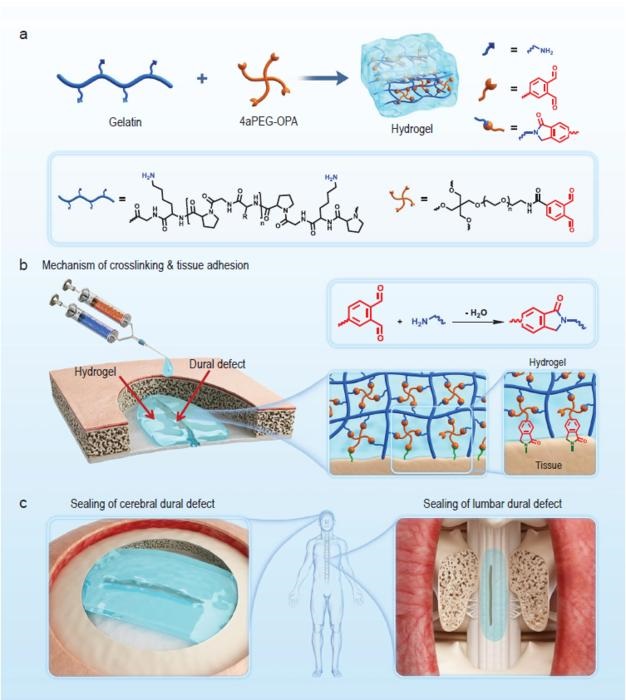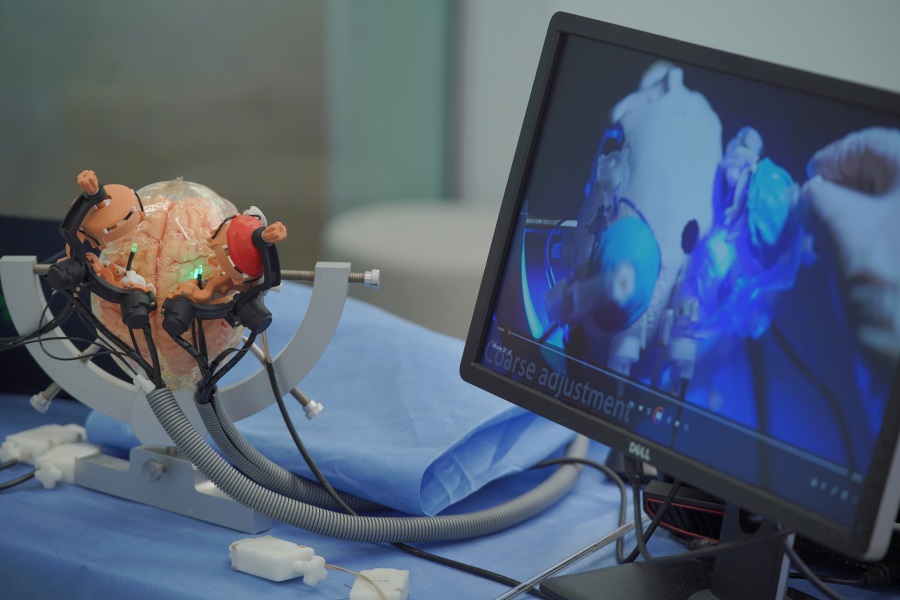10-Minute Sepsis Risk Test Demonstrates Potential to Rapidly Risk-Stratify Suspected COVID-19 Patients
|
By HospiMedica International staff writers Posted on 23 Mar 2022 |

A novel test designed to quantify the state of immune activation by measuring the biophysical properties of leukocytes from a routine blood sample in less than 10 minutes has the potential to rapidly risk-stratify patients independent of pathogen, according to a new study. This finding is important as risk stratification may improve resource allocation in hospitals.
Data from the study shows that the 10-minute IntelliSep sepsis risk stratification test from Cytovale (San Francisco, CA, USA) has the potential to provide useful prognostic information for patients with suspected infection and possible immune dysregulation that can lead to life-threatening organ dysfunction.
The Cytovale system directly analyzes white blood cells using rapid techniques that look at cell structure, making it a faster and less expensive diagnostic compared to gene expression diagnostic systems. Cytovale’s IntelliSep test uses a biomechanical evaluation of white blood cells from a standard blood draw, generating results in under ten minutes. Microfluidic cell-handling techniques combined with the technological advances of high-speed imaging and machine learning allow the Cytovale system to analyze the biophysical properties of thousands of leukocytes in a few seconds, yielding the ISI score. The ISI is a pathogen-agnostic, quantitative measure of immune activation. In patients with suspected infection, elevated ISI indicate a state of immune dysregulation and portend an immediate risk of adverse outcomes, while lower scores portend a less-severe course. The ISI results are stratified into three interpretation bands corresponding to regions of low (Green Band), intermediate (Yellow Band), and high probability (Red Band) of severe outcomes.
The study, which enrolled 282 patients presenting to the Emergency Department (ED) with respiratory symptoms early in the COVID-19 pandemic, aimed to assess the IntelliSep Index (ISI) as a tool for risk stratification of patients with suspected infection presenting to the ED. In the study, 182 (64.5%) patients received a green score, while 54 (18.1%) received a yellow score, and 46 (15.6%) a red score. Patients who received a red score had a 3-day mortality rate of 10.9%, approximately ten-fold higher than the 1.1% 3-day mortality rate experienced by patients receiving a green score. In addition, a lower percentage of green band patients required admission (96 [52.7%]) relative to those receiving yellow (44 [81.5%]) and red scores (43 [93.5%]).
The study reports the performance of this tool as a means to stratify this population for risk of morbidity and mortality resulting from infection with a novel respiratory virus, providing an important test of the value of this host-response technology in assessing severity of illness independent of pathogen type. Data from this study builds on previously published studies that have shown that Cytovale’s IntelliSep test quickly and clearly distinguished sepsis risk in a high-acuity population and helped to identify patients with infections severe enough to cause morbidity and mortality. These data demonstrate the 10-minute test’s potential to aid physicians in rapidly identifying patients at increased risk of having or developing sepsis, a dysregulated immune (white blood cell) response to infection, which is highly lethal and difficult to quickly and accurately diagnose.
“Patients frequently present to the ED with undifferentiated illnesses, forcing clinicians to make rapid, impactful decisions with limited data, often well before a definitive diagnosis is established,” said Cytovale Co-founder and CEO Ajay Shah. “Data from this study published in PLOS ONE demonstrate the potential of the IntelliSep test to assist clinicians in the risk stratification and early direction of care for patients before the results of longer-lead time diagnostic tests are available. This may enable ED providers to triage their own resources and most effectively serve all of their patients.”
Related Links:
Cytovale
Latest COVID-19 News
- Low-Cost System Detects SARS-CoV-2 Virus in Hospital Air Using High-Tech Bubbles
- World's First Inhalable COVID-19 Vaccine Approved in China
- COVID-19 Vaccine Patch Fights SARS-CoV-2 Variants Better than Needles
- Blood Viscosity Testing Can Predict Risk of Death in Hospitalized COVID-19 Patients
- ‘Covid Computer’ Uses AI to Detect COVID-19 from Chest CT Scans
- MRI Lung-Imaging Technique Shows Cause of Long-COVID Symptoms
- Chest CT Scans of COVID-19 Patients Could Help Distinguish Between SARS-CoV-2 Variants
- Specialized MRI Detects Lung Abnormalities in Non-Hospitalized Long COVID Patients
- AI Algorithm Identifies Hospitalized Patients at Highest Risk of Dying From COVID-19
- Sweat Sensor Detects Key Biomarkers That Provide Early Warning of COVID-19 and Flu
- Study Assesses Impact of COVID-19 on Ventilation/Perfusion Scintigraphy
- CT Imaging Study Finds Vaccination Reduces Risk of COVID-19 Associated Pulmonary Embolism
- Third Day in Hospital a ‘Tipping Point’ in Severity of COVID-19 Pneumonia
- Longer Interval Between COVID-19 Vaccines Generates Up to Nine Times as Many Antibodies
- AI Model for Monitoring COVID-19 Predicts Mortality Within First 30 Days of Admission
- AI Predicts COVID Prognosis at Near-Expert Level Based Off CT Scans
Channels
Artificial Intelligence
view channel
AI-Powered Algorithm to Revolutionize Detection of Atrial Fibrillation
Atrial fibrillation (AFib), a condition characterized by an irregular and often rapid heart rate, is linked to increased risks of stroke and heart failure. This is because the irregular heartbeat in AFib... Read more
AI Diagnostic Tool Accurately Detects Valvular Disorders Often Missed by Doctors
Doctors generally use stethoscopes to listen for the characteristic lub-dub sounds made by heart valves opening and closing. They also listen for less prominent sounds that indicate problems with these valves.... Read moreCritical Care
view channel
AI Doubles Medical Professionals’ Accuracy in Reading EEG Charts of ICU Patients
Electroencephalography (EEG) readings are crucial for detecting when unconscious patients may be experiencing or are at risk of seizures. EEGs involve placing small sensors on the scalp to measure the... Read moreFlexible Device Enables Sweat Gland Stimulation and Simultaneous Biosensing
Human sweat is rich in biomarkers that can be used to monitor a range of health conditions, from diabetes to genetic disorders. Many users prefer sweat sampling over blood collection because it is painless.... Read more
WHO Publishes First Global Guidelines to Reduce Bloodstream Infections from Catheter Use
Up to 70% of all inpatients require a catheter, specifically a peripherally inserted catheter (PIVC), at some point during their hospital stay. Patients who receive treatments via catheters are particularly... Read moreSurgical Techniques
view channel
Study Warns Against Dangerous Smoke Levels Produced During Endoscopic Gastrointestinal Procedures
Healthcare professionals involved in certain smoke-generating endoscopic gastrointestinal procedures, such as those using electrical current to excise polyps, may be exposed to toxin levels comparable... Read more
New Hydrogel Sealant Effective at Sealing Dural Defects and Preventing Postoperative Adhesion
The dura mater is a fibrous membrane of connective tissue that envelops the brain and spinal cord. In neurosurgical procedures that require access to the brain or spinal cord, opening the dura mater often... Read more
MRI-Guided Multi-Stage Robotic Positioner Enhances Stereotactic Neurosurgery Precision
Magnetic resonance imaging (MRI) offers significant benefits in neurosurgery, providing detailed 3D visualizations of neurovascular structures and tumors. Traditionally, its use has been restricted to... Read morePatient Care
view channelFirst-Of-Its-Kind Portable Germicidal Light Technology Disinfects High-Touch Clinical Surfaces in Seconds
Reducing healthcare-acquired infections (HAIs) remains a pressing issue within global healthcare systems. In the United States alone, 1.7 million patients contract HAIs annually, leading to approximately... Read more
Surgical Capacity Optimization Solution Helps Hospitals Boost OR Utilization
An innovative solution has the capability to transform surgical capacity utilization by targeting the root cause of surgical block time inefficiencies. Fujitsu Limited’s (Tokyo, Japan) Surgical Capacity... Read more
Game-Changing Innovation in Surgical Instrument Sterilization Significantly Improves OR Throughput
A groundbreaking innovation enables hospitals to significantly improve instrument processing time and throughput in operating rooms (ORs) and sterile processing departments. Turbett Surgical, Inc.... Read moreHealth IT
view channel
Machine Learning Model Improves Mortality Risk Prediction for Cardiac Surgery Patients
Machine learning algorithms have been deployed to create predictive models in various medical fields, with some demonstrating improved outcomes compared to their standard-of-care counterparts.... Read more
Strategic Collaboration to Develop and Integrate Generative AI into Healthcare
Top industry experts have underscored the immediate requirement for healthcare systems and hospitals to respond to severe cost and margin pressures. Close to half of U.S. hospitals ended 2022 in the red... Read more
AI-Enabled Operating Rooms Solution Helps Hospitals Maximize Utilization and Unlock Capacity
For healthcare organizations, optimizing operating room (OR) utilization during prime time hours is a complex challenge. Surgeons and clinics face difficulties in finding available slots for booking cases,... Read more
AI Predicts Pancreatic Cancer Three Years before Diagnosis from Patients’ Medical Records
Screening for common cancers like breast, cervix, and prostate cancer relies on relatively simple and highly effective techniques, such as mammograms, Pap smears, and blood tests. These methods have revolutionized... Read morePoint of Care
view channel
POCT for Infectious Diseases Delivers Laboratory Equivalent Pathology Results
On-site pathology tests for infectious diseases in rural and remote locations can achieve the same level of reliability and accuracy as those conducted in hospital laboratories, a recent study suggests.... Read more
Cartridge-Based Hemostasis Analyzer System Enables Faster Coagulation Testing
Quickly assessing a patient's total hemostasis status can be critical to influencing clinical outcomes and using blood products. Haemonetics Corporation (Boston, MA, USA) has now obtained 510(k) clearance... Read more
Critical Bleeding Management System to Help Hospitals Further Standardize Viscoelastic Testing
Surgical procedures are often accompanied by significant blood loss and the subsequent high likelihood of the need for allogeneic blood transfusions. These transfusions, while critical, are linked to various... Read moreBusiness
view channel
MEDICA INNOVATION FORUM for the Healthcare Innovations of the Future
By always offering innovations and updating existing program formats, the internationally leading medical trade fair MEDICA in Düsseldorf has been successful for over half a century and always gives its... Read more

















